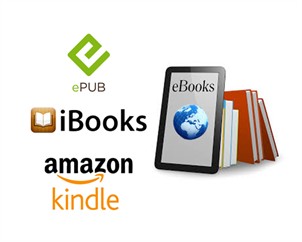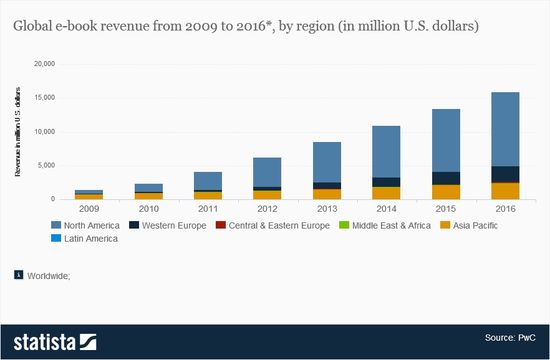Why Businesses should Consider Translating E-Books
The creation, translation, publishing and of course the global sales of e-books has exploded in the last year. E-book sales have been expanding in the United States as e-books constitute a growing percentage of the overall US consumer book sales market. In 2009 e-books accounted for approximately 2.7% of total consumer book sales but by 2012 e-books had grown to 14.9 % of the global book market. In terms of dollars, e-book sales revenue reached $3.3 billion US dollars in 2012. These stats provided courtesy of Pricewaterhouse Coopers.

The global revenue from e-books sales is expected to continue to rise with the US leading e-book sales for now, but we are seeing massive growth in both Europe and Asia.
Of course e-books would not be possible without the explosive growth in the adoption of various e-readers that people are buying which allow them to collect e-book libraries and shop online for new e-books. The leading e-reader providers worldwide in 2012 were Amazon, Kobo, Barnes and Noble and Sony. Amazon creator of the Kindle currently accounts for approximately 55 percent of the global e-reader market. In North America, Barnes and Noble’s Nook e-reader accounted for 22 percent of e-readers bought in 2012. The Kindle Fire from Amazon reached 5.5 million in 2011 and is projected to reach 27.8 million in 2014.

The benefits of e-book translation for Business
There are several benefits to businesses who invest in digitizing documents into e-books. Some of the benefits include:
- Accessibility. E-books are more accessible than traditional books and documents. You deliver your e-book to the customer using your website or email interface. It is one of the most effective methods to reach out to your customers offering a vast amount of information with a single click.
- Cutting Costs. E-books are cost-effective and more reliable than printed documentation. With e-books you can save money typically spent on print and logistics required for traditional books and guides. Most importantly, you have the ability to modify or upgrade your content easily without worrying about the added cost of printing updated editions.
- Distribution. E-books will help you reach out to customers around the world with many formal and informal channels for distribution. Whether from publishers and distributors like Amazon and the Apple store or from your own company website.
- Mobility. Customers can read e-books easily on their smart phones, tablets and Kindle devices from anywhere and at anytime.
How businesses are using e-books?
Another growth area for e-books comes from companies who are using e-books for internal and external content marketing and global training. The formats available, rising use of handhelds and tablets and ease of updating e-book content make them ideal for a range of corporate content from global training materials to corporate promotional collateral.
Over the next few weeks we will publish a series of blogs covering a range of topics related to e-book translation and desktop publishing to help you leverage the e-book format for your global content needs.
